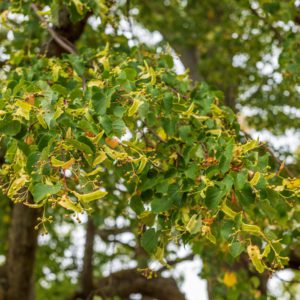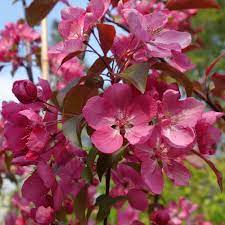Cedrus libani
Price range: €225.00 through €400.00
Frequently Bought Together



Description
Quick Facts
- Common Name: Cedar of Lebanon
- Botanical Name: Cedrus libani
- Plant Type: Evergreen conifer tree
- Mature Height: 20-40m
- Mature Spread: 10-15m (young), 20-30m (mature)
- Flowering Period: September to October (cones)
- Flower Colour: Male cones: pale yellow; Female cones: green ripening to brown
- Foliage: Dark green to blue-green needles in dense clusters
- Hardiness: RHS H7 (very hardy)
- Soil Requirements: Well-drained, tolerates most soil types including chalk
- Aspect: Full sun
- Maintenance: Low
Description
Experience the majestic beauty of Cedrus libani, the legendary Cedar of Lebanon that brings exceptional grandeur, timeless elegance, and biblical significance to large Irish gardens and estates with its magnificent architectural form. This outstanding evergreen conifer offers remarkable qualities—spectacular tiered horizontal branching that creates distinctive layered form and becomes increasingly dramatic with age as mature trees develop wide-spreading flat-topped crowns of breathtaking beauty, dense clusters of dark green to blue-green needles that provide year-round colour and texture creating commanding evergreen presence, impressive upright barrel-shaped cones measuring 8-12cm that ripen from green to rich brown adding ornamental interest, and legendary status as one of the most iconic and historically significant trees in cultivation mentioned throughout the Bible and revered for thousands of years, making this one of the finest and most awe-inspiring specimen trees for creating monumental presence, timeless grandeur, and living heritage.
Throughout the year, this captivating tree displays its characteristic needles measuring 2-3cm long arranged in dense clusters of 10-45 needles on short shoots, creating thick tufts along the branches in dark green to blue-green with a slight glaucous bloom. Young trees develop a conical pyramidal form with upward-sweeping branches. But as the tree matures (typically after 40-60 years), the crown transforms into the characteristic wide-spreading, flat-topped form with distinctive horizontal tiered branching—this is when the tree achieves its legendary architectural beauty. The branches extend horizontally in layers, creating dramatic sculptural form that is instantly recognizable. In autumn (September-October), mature trees produce impressive upright barrel-shaped cones measuring 8-12cm long and 4-6cm wide. Male cones appear in clusters, releasing clouds of yellow pollen, while female cones are green ripening to rich brown over 2-3 years before disintegrating on the tree to release winged seeds. The thick trunk develops deeply fissured dark grey to almost black bark with age, adding to the ancient, timeless character. The overall effect is monumental—a tree of extraordinary presence and beauty.
Native to the mountains of Lebanon, Syria, and Turkey, Cedrus libani is one of the most historically and culturally significant trees in the world. Mentioned repeatedly in the Bible as a symbol of strength, beauty, and longevity, these magnificent trees were prized by ancient civilizations—King Solomon used Cedar of Lebanon timber to build his temple in Jerusalem. The species name ‘libani’ refers to Lebanon, where ancient forests once covered the mountains (though sadly now reduced to small remnants). Introduced to Britain in the 1630s, with many magnificent mature specimens gracing historic estates and parklands. Exceptionally hardy and long-lived (often 1,000+ years in native habitat, 300-500 years in cultivation), this cedar thrives in Irish conditions when given ample space, full sun, and good drainage. Tolerates exposure, urban pollution, drought once established, and a wide range of soil types including chalk. Slow-growing initially but accelerates with age—patience is rewarded with one of the most magnificent trees imaginable.
Create stunning compositions by planting as monumental specimen trees in very large gardens, estates, parklands, or open spaces where the impressive mature size, tiered branching, and flat-topped crown can develop fully and be appreciated from a distance—this tree needs significant space. Exceptional as focal points in historic landscapes, formal gardens, or positioned where the architectural form creates dramatic impact against the sky. Magnificent in avenues (though spacing must be very generous—20-30m apart minimum), or as commanding centrepieces in large lawns. NOT suitable for small or medium gardens—this is a tree for properties with extensive grounds. Plant where future generations can appreciate the mature beauty—this is a legacy tree that improves with age and becomes more spectacular over decades and centuries.
Caragh Garden Notebook
Planting: Space trees 20-30m apart minimum if planting multiples—this tree develops a very wide-spreading crown at maturity and needs exceptional space. Plant container-grown specimens year-round, though autumn or early spring is ideal. Dig holes twice the width of the root ball. Plant at the same depth as the container—do not plant too deeply. Stake for the first 3-5 years. Water thoroughly. Choose positions in full sun with ample space for the mature size—consider the 50-100 year spread, not just the current size. NOT suitable for small or medium gardens. This is a tree for large properties, estates, and parklands only.
Soil Preparation: Thrives in well-drained soil with pH 6.0-8.0. Tolerates a wide range of soil types including clay, loam, sand, and moderately acidic to alkaline conditions including chalk and limestone. CRITICAL requirement is excellent drainage—dislikes waterlogged or poorly drained sites which can cause root rot. Prefers deep, fertile, moisture-retentive but well-drained conditions. Tolerates drought once established (deep roots), exposure, and poor soils. Best growth occurs in full sun with good drainage and shelter from strong winds when young (though mature trees tolerate exposure).
Container Growing: Young specimens can be grown in very large containers for several years, or grown as bonsai specimens where the naturally tiered branching creates stunning miniature forms. However, this is fundamentally a monumental tree that should be planted in the ground in large properties where it can achieve its full majestic potential and develop the characteristic wide-spreading, flat-topped crown that makes this one of the most magnificent trees in cultivation. Container growing long-term severely restricts this tree’s natural grandeur.
Seasonal Care: Requires minimal to no pruning—the naturally tiered, layered branching develops without intervention and should never be pruned as this destroys the characteristic architectural form. Remove only dead or damaged branches if absolutely necessary. Never top or heavily prune—this ruins the natural form irreparably. Apply slow-release balanced fertiliser in early spring for young trees if desired, though established trees require no feeding. Water during dry spells in the first 5-10 years until the deep root system establishes—drought-tolerant once mature. Generally pest and disease resistant. Very low maintenance once established—simply allow the tree to develop its natural form over decades.
Propagation: Can be grown from seed collected from mature cones (which take 2-3 years to ripen), though seedlings grow very slowly initially and take many decades to reach impressive size and develop the characteristic flat-topped form. Collect seeds in autumn when cones begin to disintegrate. Sow in autumn in pots outdoors—germination occurs in spring but can be erratic. Seedlings require patience—growth is slow for the first 10-20 years. Selected cultivars are propagated by grafting. Home gardeners seeking specimens of reasonable size should purchase nursery-grown trees of good size to reduce the decades-long wait for impact.
This magnificent beauty is absolutely awe-inspiring—one of the most majestic and iconic trees in the world! That distinctive tiered horizontal branching and flat-topped crown at maturity is breathtaking—pure architectural grandeur. Biblical significance, legendary status, and living heritage spanning thousands of years. Exceptionally hardy, long-lived (centuries!), and tolerates challenging conditions once established. CRITICAL: needs very large space—not for small or medium gardens. This is a legacy tree for estates and parklands that becomes more spectacular with each passing decade. Plant for future generations—absolutely worth it for that monumental presence and timeless beauty!





